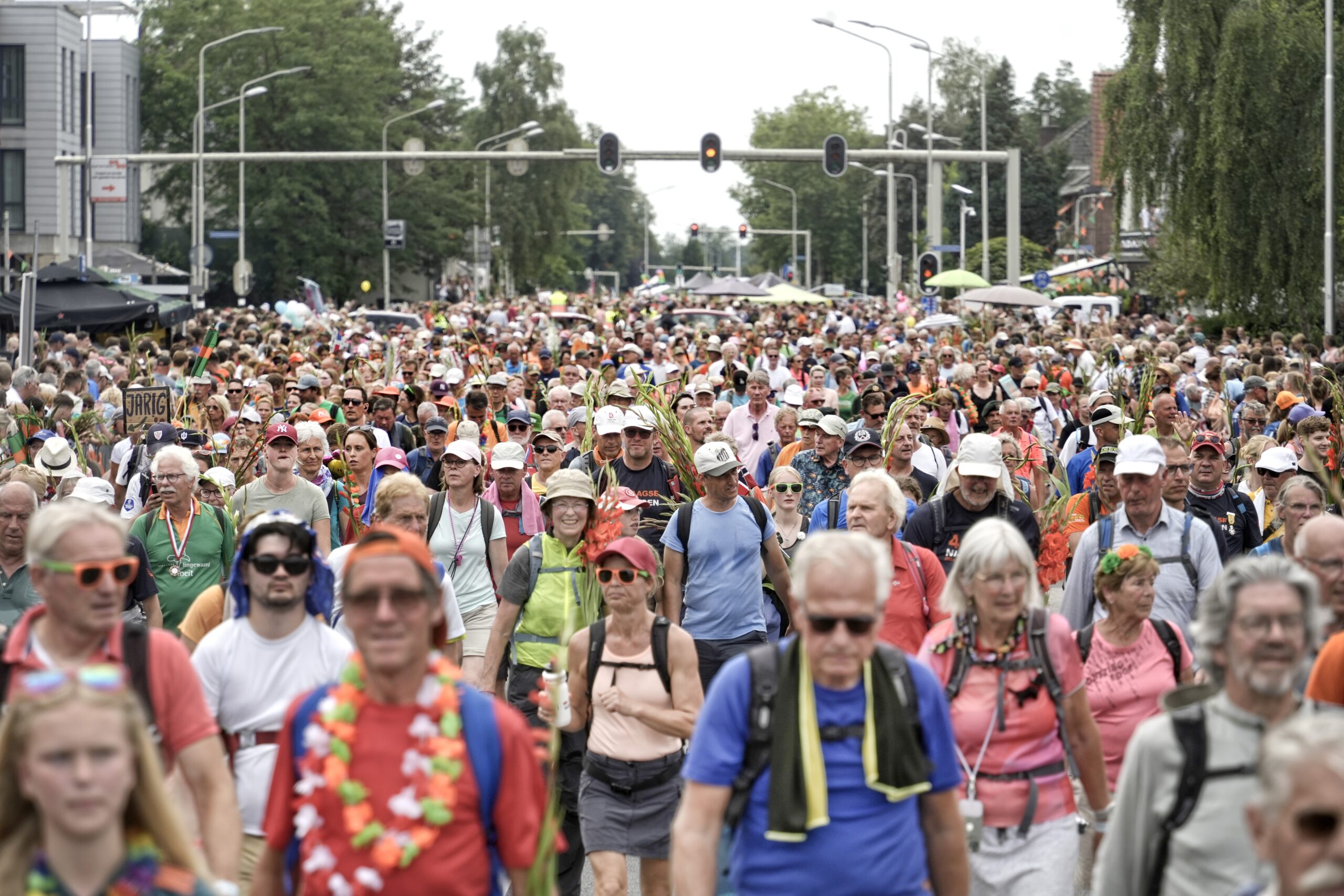The Vierdaagse – or four day march – is a very Dutch institution in which people walk en masse up to 220 kilometres over four days for fun and glory. The biggest of them all, the Nijmegen Vierdaagse, is celebrating its 107th edition and will kick off on Tuesday. Here’s what you need to know before you put your boots on.
Lesson 58: four days of joy and blisters
1 The first Vierdaagse
The Vierdaagse first took place in 1909 when 306 (male and mostly military) participants started from 10 different army garrisons around the country to walk 35 kilometres a day for four days – four day events being very popular in the day.
The idea was developed by the Dutch League for Physical Education because, according to some reports we’ve read, there were concerns that the arrival of motorised transport would hit military fitness.
2 The Nijmegen connection
In 1925 the big official Vierdaagse moved to Nijmegen where it has remained ever since. The marches have a different route each day through Gelderland, Brabant and Limburg as well as Nijmegen and its outskirts. There were no marches in 1914 and 1915 and during World War Two which is why Nijmegen celebrated 100 marches in 2016.
3 The start
The Nijmegen Vierdaagse always starts on the third Tuesday of July at dawn.
4 Who is taking part?
This year, people from 82 different countries around the globe are among the 47,000 who will start out, including Afghanistan, Ireland, Sweden and Vietnam. There are soldiers from 36 different countries on the official list and this year foreign soldiers outnumber the Dutch contingent with 3,563 and 2,465 respectively.
The average age of the participants is 47.2 this year, and men (53%) outnumber women (43%). The largest number of participants is aged between 61 and 70 (10,922) and 7 are 91+. Although the 4Daagse is open to 12 to 15 year-olds, particularly sturdy 11-year-olds may also enter.
5 The rules
The Vierdaagse is the only walking event of its kind to have rules about distances based on sex and age. Youngsters between 12 and 15 and the over 60s can sign up for a 30 kilometre daily march or more if they’re up to it.
The standard distance for men and women over 15 is 40 kilometres a day (the women can opt for 50 and increasingly do) but the group of men aged between 18 and 50 are stuck with a minimum of 50 kilometres. The equality commission has labelled the difference ‘discriminatory’ several times but to no avail.
6 The weather
The event takes place in summer, not the most reliable of seasons in the Netherlands, and the Vierdaagse organisers sensibly advise to come prepared for both rain and shine.
In 2006 the Vierdaagse was cancelled when two people died of heat stroke on the first day of the event and no change in weather was expected. This year, weather bureau Weeronline is predicting good walking weather for Tuesday and Wednesday with a maximum of 23° and an occasional to cool down sweaty brows.
Thursday and Friday will be hotter, with temperatures that can climb up to 30°, particularly on Friday which may also feature a thunder storm.
7 Alternative events
Many people feel the Vierdaagse has become a victim of its own success and are voting, literally, with their feet. They prefer to take part in less crowded walking events such as the Apeldoornse Vierdaagse.
For children who are not yet up to the 30k challenge there is always the Avondvierdaagse, an evening event with distances kinder to small feet and popular at primary schools. If you are a parent with children at a Dutch primary school you are likely to find yourself roped in.
8 Gladiola
The finishing line of the Vierdaagse is in Nijmegen’s St Annastraat which is called the Via Gladiola for the occasion, in acknowledgement of the city’s Roman past and the arduous nature of the event.
The expression ‘De dood of gladiolen’ (death or gladioli) is supposed to hark back to Roman times too, a gladiolus being a Roman sword. Participants are given great bunches of gladioli (the flower not the sword) when they cross the finish.
9 The app
There’s a 4Daagse app which will tell you about sanitary stops, watering places and medical posts. You can also livetrack your pals and send jolly pics of your blisters. We await the figures about people bumping into lamp posts or each other while looking at their phones.
10 The rewards
Those who manage to drag themselves over the finishing line, blisters and all, receive the so-called ‘kruisje’, or cross. Its official title is ‘Cross for manifest marching ability’.
If you don’t want to walk, you can always go to the Vierdaagse Feesten (until 18 July) with music and lots of events for children.
